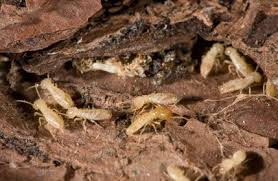The Termite Control In Field Crops Diaries
Special care and equipment can be used to discover sub-nests in a building incuding a moisture metre, microwave and infrared cameras - but each have their own limitations.
There are lots of types of termite control chemicals registered by the relevant Condition and/or Federal Government Authority for use in termite control as a soil treatment chemical.
Unknown Facts About Termite Control In Field Crops
WARNING: Several outdated goods are solvent based termite control dyes which may lead to health issues to asthmatics during the drying process.

The smart Trick of Termite Control In Field Crops That Nobody is Discussing
Termidor and Premise do NOT have an obnoxious odour or emit airborne fumes or residues. Both are enrolled as a low hazard insecticide using a CAUTION notation on the registered tag.
Fipronil, the active ingredient in Termidor, has been used in the USA, Australia and other countries, such as flea and tick control on millions of cats and puppies. Termidor and Premise represent modern technology.
Some alternative termiticides possess a strong repellency action to discourage foraging termites. Whereas Termidor and Premise are non-repellant into the termites.
Termites can enter the treated soil zone without detecting the Termidor or Premise chemical.
Getting The Termite Control In Field Crops To Work
The repellant nature of different products mean the termites can detect the chemical and will proceed along the treated soil areas, actively seeking a gap to gain entry into the building.
Premise has been utilized as soil treatment barrier against termites for more than eight years in the USA with excellent outcomes for long term pest control control. We're not aware of any significant issues during this age.
Premise will act to kill termites, in the greater concentration treated soil areas abutting the building. With Premise, termites which forage in the lower concentrated treated soil regions, will become disorientated, stop feeding, and therefore are diseased by natural fungi and micro-organisms in the dirt.
See This Report about Termite Control In Home
Both Bayer Premise and BASF Termidor assert their products will transfer from one affected termite to another... the technology aimed at eradicating the queen termite and the entire colony - refer to the animated illustration under:
Termites tunneling in the Premise treated soil area abutting the building (of top concentration - near the point of application) are killed outright.
Getting My Termite Control In Garden To Work
Termites tunneling in the outer parts of a Premise treated soil area (of reduced concentration) will not detect the Premise which adheres to their bodies and has a delayed lethal effect of several days - enough time to be transferred back to the central colony nest.
Following 250 million decades of living underground, subterranean termites have evolved with a very thin waxy skin (called an exoskeleton) that readily absorbs moisture.
Premise adheres to the termite exoskeleton and is readily adsorbed through the exoskeleton and into the termite's body to immobilize and destroy the affected termite within a couple of days.
The Definitive Guide to Termite Control In Field Crops
The termites spread the Premise to other termites during regular physical contact, particularly when working together in close proximity, grooming and feeding the rest of the colony, a regular find more info function of their daily life.
Termites carry off or cannibalize other dead termites, further spreading the deadly effect of the Premise chemical across the colony.
The Sentricon termite monitoring and baiting system was developed by Dow AgroSciences, USA. The Sentricon bait is an insect growth regulator, which can be designed to be spread throughout the colony by the worker termites.
The 10-Second Trick For Termite Control In Garden
An insect growth regulator affects termites by stopping the moulting process needed for the termites to grow. As the employee termites die off, the termite colony declines to the point at which it can anchor no longer sustain itself, ultimately leading to it is collapse and elimination.
The Exterra termite monitoring and baiting system is owned by Ensystex, USA. The Exterra termite bait is also an insect growth regulator.
The two Sentricon and Exterra systems have their own plastic bait stations which must be utilized with their product. These bait stations can be put in the ground and assessed regularly.
Termite colony elimination in favourable circumstances might take several weeks to a few months. Nonetheless, in some instances, termite colony elimination is unsuccessful or may take years, depending on the circumstances. Where a significant number of termites find and connsume the bait, then colony elimination is virtually assured within a few months.
Termite Control In Garden - The Facts
Both of the Sentricon and Exterra termite baits are designed to be slow acting, non-repellant and consequently distribute to other termites in the colony before the colony can detect where the mortal effect is coming out of.
Termites have acute survival instincts. The location of a toxic food supply if detected, will be abandoned. Too much disturbance of these foraging termites (workers and soldiers) in a particular location, will alert the termite colony to abandon the area. The termites appear to be gone, but might in fact be entering the building in different areas.